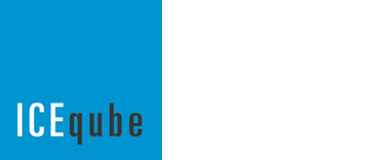System Design for Hazardous Areas
Purging and Pressurizing an Enclosure
Many industrial processes require operation in locations where there may be hazardous gases, dust or fibers present in the atmosphere. Electrical equipment located in spaces where flammable or combustible materials are present must somehow protect against ignition of these materials. A fire or an explosion could lead to billions of dollars of damage and the loss of life. Providing protection against this type of disaster can be accomplished by the design of specialized electrical equipment using proven design techniques, or providing protection for the equipment by creating an environment void of these combustibles.
Design of equipment may include multiple methods of protection. Allowable methods of protection are dependent upon the application of the component and the NEC (National Electric Code) Classified or ATEX (Atmospheres EXplosibles) and IECEx (International Electrotechnical Commission Explosive Atmospheres) Zone rating requirements. Some methods of protection include intrinsic safety, temperature limiting, hermetic encapsulation, and for mechanical devices the use of materials that are non-sparking. All of these methods prevent the electronic or mechanical device from igniting the combustible material. Agency approved components that offer these methods of protection can be quite costly due to production techniques, required testing and certification procedures.
The alternative to using agency (NEC, CEC, ATEX or IECEx) certified components is to create a safe atmosphere for the operation of standard duty components within the hazardous material laden environment. This can be done by using an enclosure to house the non-hazardous rated components, and to protect that enclosure’s internal space from the ignitable materials. This can be done with methods referred to as purging and pressurization.
Purging is the act of introducing and venting clean air or an inert gas into the enclosed space. The amount of “purge air” that must be introduced and vented from the enclosure is based upon the enclosure volume, the type of equipment inside of the enclosure and the regulatory standards that apply to that application. Purging must be completed before the standard components are energized and operation is initiated.
After the purging process clears the enclosure of the hazardous contaminants to create a safe operating space, this safe space must be maintained by the pressurization process. Pressurization can be done with this same safe air or inert gas. During the pressurization process, the pressure inside of the enclosure is maintained slightly above the outside ambient pressure. This pressure requirement is usually in the range of .1 to .5 inches of water column (.25 to 1.25 mbar). Maintaining this positive pressure inside of the enclosure prevents the hazardous materials in the atmosphere outside of the enclosure from infiltrating to the inside where an ignition or explosion could take place.
Safety alarms and/or electrical lockout systems monitor this pressurization to assure safe operation should a problem arise with the safe air pressure supply. Location of the sensor that monitors the enclosure pressure is important in preventing “false” alarms. Components inside of the enclosure that have internal fans, such as servers, inverters or air conditioners, move air by creating a negative pressure and a positive pressure. Locating this sensor in the air flow path of a device may cause a false alarm if located in an area where negative pressure is being developed. Or, an alarm may not activate on a loss of pressure if in an area where a fan be creating a positive pressure.
There are 3 widely used ratings for purge systems. These are types Z, Y and X. Selection of these systems is determined by the area’s classification and the type of equipment that will be installed inside of the enclosure.
Z type purge systems are used in a Division 2 area where non-hazardous rated equipment will be installed inside of the enclosure.
Y type purge systems used in a Division 1 area where Division 2 rated hazardous area equipment will be installed inside of the enclosure.
X type purge systems are used in a Division 1 area where non-hazardous rated equipment will be installed inside of the enclosure.
For ATEX and IECEx Zone rated applications, purge systems are designated pz, py and px. Zone ratings and applications are similar to the previously described Division 1 and 2 area ratings. However, in the Zone system, there is an additional Zone 0 area. Please check equipment ratings and with certifying bodies to assure the proper type of purge system for the application.
In addition to the purge system, the type of enclosure must also be considered. Typically, the recommended enclosure for the purge and pressurization application is to be rated a minimum of NEMA Type 4 (IP65) to be able to withstand the purge testing and environment. Check with the enclosure manufacturers for their environmental protection recommendations.
Another consideration is the permissible operating temperature of the equipment inside of the enclosure. Heat generated by this equipment may exceed the amount of heat dissipated by the enclosure surface and any of the heat exhausted with the air vented by the pressurized air system. This factor along with ambient temperatures exceeding the enclosure design temperature may require a supplemental cooling system or air conditioner. This air conditioner must also be rated for operation in the environment’s hazardous area.
In the case of a purge and pressurization application, not only must the air conditioner have the proper Class, Division and Zone ratings, it must also be able to meet the purge and pressurization requirements. To do this, a barrier must be made with the air conditioner between the safe area inside of the enclosure, and the combustible atmosphere surrounding the enclosure and the air conditioner.
Mounting the air conditioner onto the enclosure surface will require openings in the enclosure surface for heated enclosure air to flow to the air conditioner, and cool dehumidified air to flow from the air conditioner to the enclosure. This is known as closed loop cooling, where no outside hazardous air is introduced into the enclosure air stream. The air conditioner’s internal design must also provide a boundary between the conditioned safe air side of the enclosure, and the ambient hazardous air side of the air conditioner where the unwanted heat from the enclosure is rejected to the atmosphere. Some designs also include a trap in the condensate management system. This trap may require to be filled with water in order to prevent enclosure pressure loss through the condensate management system.
Openings are also required for mounting hardware to secure the air conditioner to the enclosure surface. Some type of seal, usually in the form of a gasket material, is required at the perimeter of the air conditioner to prevent excessive pressurized air leaking from the enclosure and to maintain the enclosure’s NEMA or IP rating. Without this enclosure and air conditioner interface seal and air conditioner internal design considerations, the pressure inside of the enclosure may drop to an unsafe level and cause an alarm or de-energize electrical power to the equipment inside of the enclosure. Check the air conditioner manufacturer instructions for properly installing the air conditioner on the enclosure.
When designing an equipment application for a hazardous area project, keep these things in mind:
- What is the area classification?
- What is the area classification of the electrical and mechanical equipment selected?
- If the equipment is not rated for the hazardous area, what NEMA or IP enclosure rating do I require to meet the area environmental conditions?
- What type of purge and pressurization system do I need to maintain a safe environment and satisfy agency requirements?
- What is the maximum operating temperature of the equipment I will be placing inside of the enclosure?
- Will heat dissipated by the equipment inside of the enclosure cause the internal enclosure temperature to rise above this maximum operating temperature?
- How much cooling capacity is required to maintain a safe operating temperature?
- Is the air conditioner certified for the NEMA/IP rating of the enclosure and the hazardous area requirement?
For assistance in selecting a cooling system to meet either hazardous area Class or Zone rated cooling applications, contact the sales and engineering teams at Ice Qube. Ice Qube offers a wide range of 3rd party certified air conditioner products for Class 1 Division 2 areas, along with Zone 1 and Zone 2.
Be sure to request and review manufacturer specifications and certification from all equipment manufacturers to assure the equipment is suitable for your application. Consideration of the above and following these steps will assure a successful project.



